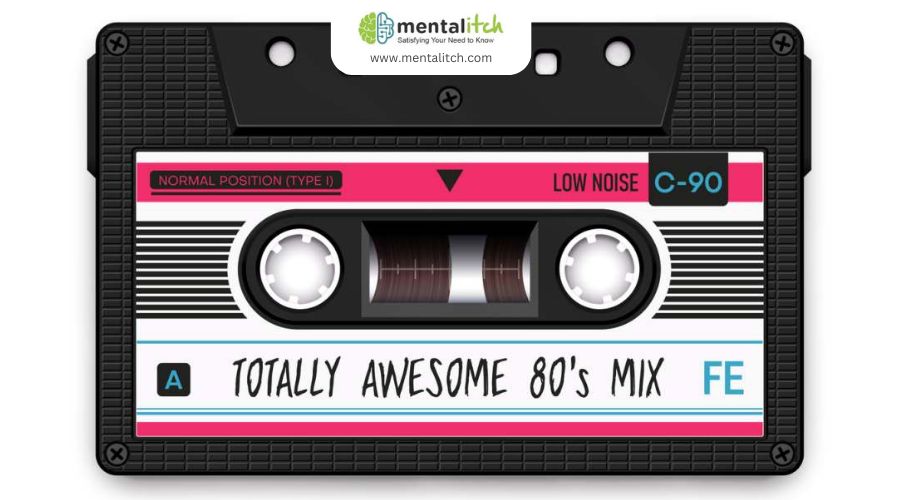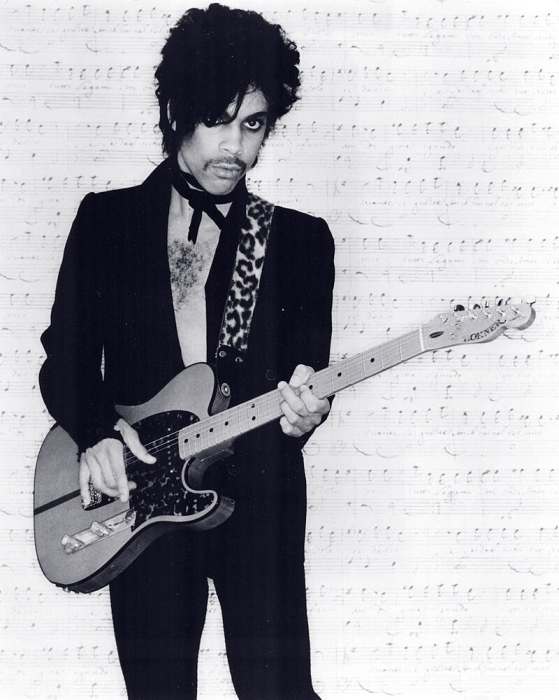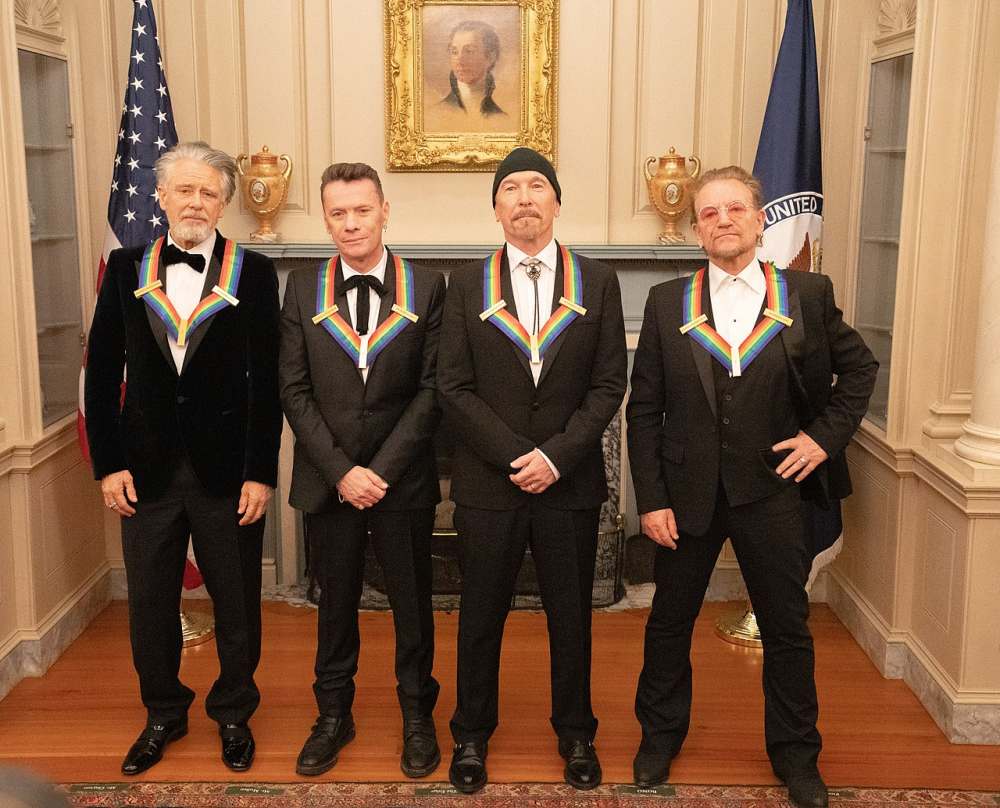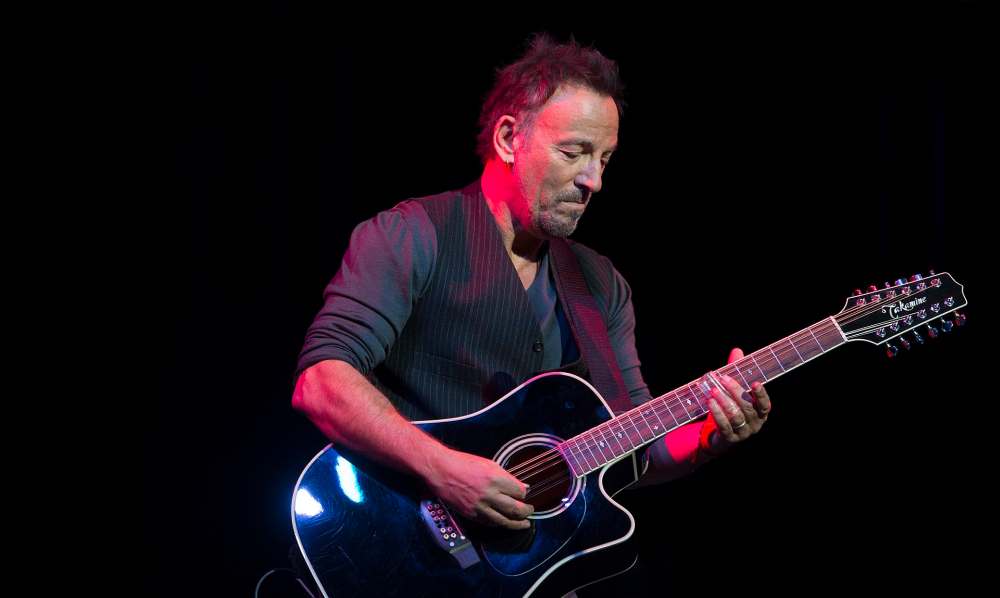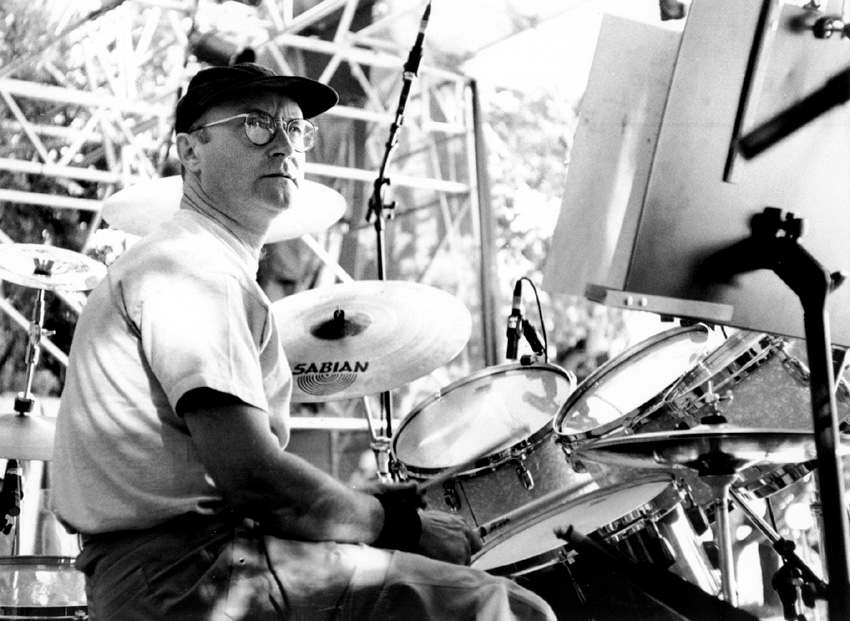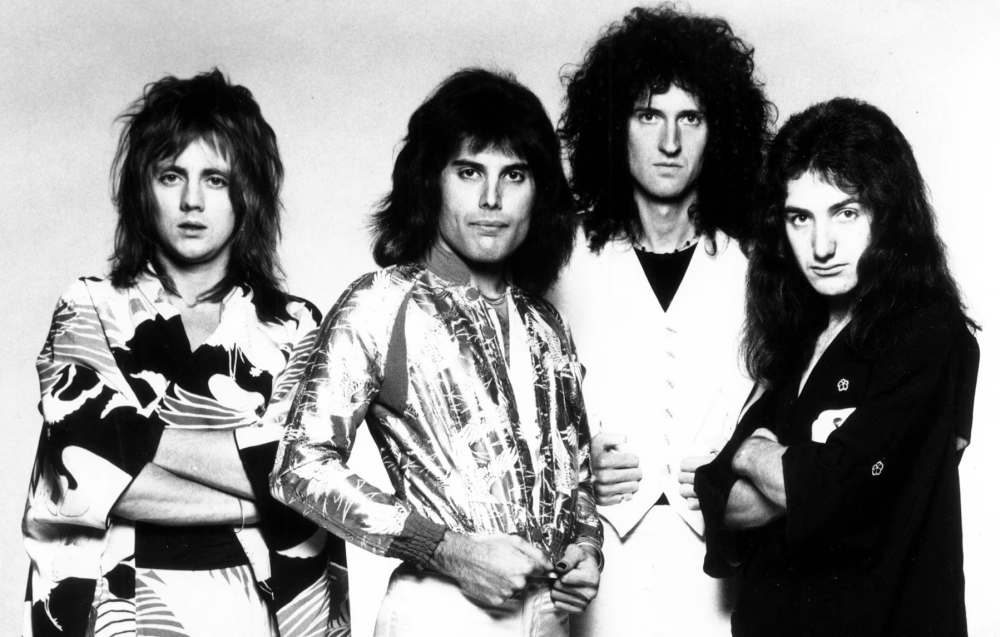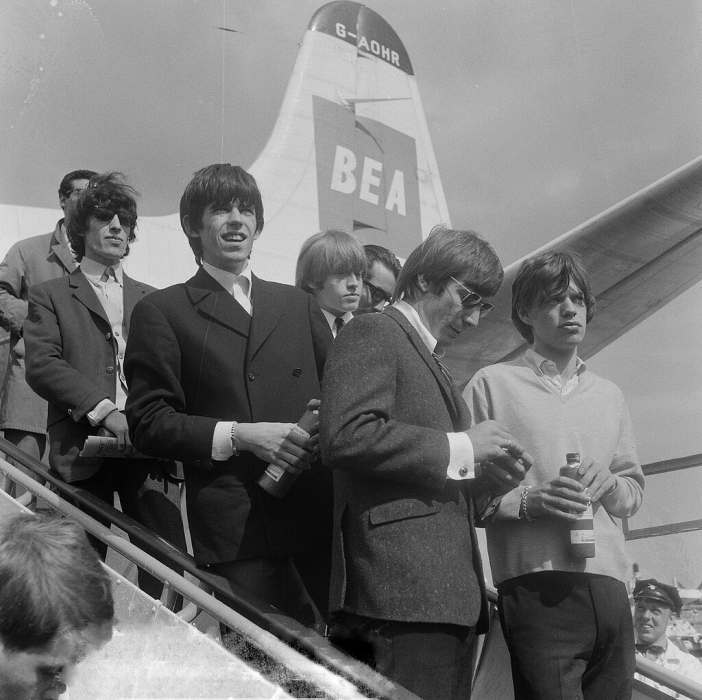From the 1960s and the 1970s, America experienced a range of upheavals — the counterculture movement, the Vietnam war, the Watergate scandal, the domestic economic crisis, and much more. As a result, many Americans were left frustrated. Their confidence in their fellow citizens and the government was severely undermined. By the end of Jimmy Carter’s presidency, the idealistic dreams of many Americans were destroyed by inflation, foreign policy troubles and escalating crime. To cope with the turmoil, Americans adopted a new conservatism in social, political and economic way of living under the Reagan administration.
The 1980s is also a decade known for its materialism and consumerism, not to mention the rise of the “yuppie” culture, according to Guitar Junky. Many young, highly-educated people who were enjoying good pay got to also enjoy the benefits from it, of course. Having disposable income at hand, they were able to indulge their pleasures such as hitting the bars, watching box-office films, spending on designer apparel, records, fancy cars, as well as the latest in technology back then. They were also able to imitate the latest fashions of their movie and pop music idols.
The Influence of Music of Fashion in the 80s
Speaking of fashion, the 1980s is also memorable in terms of the developments in this field. Much of the early 1980s fashion was very much like the 1970s — colors somewhat subdued, lots of browns, tans, and oranges. Blocky shapes were in every corner, and dressing like a tennis player was still considered cool.
But by the mid-1980s, the whole thing changed when pop music stars such as Madonna and Cyndi Lauper became popular. They introduced an entirely new style that most people associate with the 1980s to the present day. Bright colors, spandex, bangles, hoop earrings, teased hair, loud makeup and neon clothing were the order of 80s fashion for women. For the guys, activewear such as sweatpants and sweatshirts, denim jeans and jackets, wild-colored thick, itchy sweaters and athletic shoes were “in” during the decade.
The Growth of Film and Television in the 1980s
The 1980s is also known as the age of the blockbuster films. The decade saw the emphasis and the growth in the film franchises, most especially in the science fiction, action and horror genres. Such films as The Empire Strikes Back (in the Star Wars films), the first Indiana Jones film Raiders of the Lost Ark, and the first installment of Back to the Future, raked in millions of dollars at the box office and spawned many sequels. You cannot recall the 1980s without remembering your favorite teen comedies, which probably saw their emergence and popularity during this decade. The best examples of this sub-genre include “Ferris Bueller’s Day Off”, “Fast Times at Ridgemont High” and “Revenge of the Nerds”. The new rating system PG-13 was also introduced during this decade.
Despite the virtual monopoly enjoyed by the three big television networks — ABC, CBS and NBC — cable television began to experience unprecedented growth. For a fee, subscribers got to enjoy a wide array of channels that include MTV, ESPN, HBO, CNN, Nickelodeon and others. We take cable TV for granted these days, but way back in the 1980s, just a few households had the privilege of a cable TV.
Music of the 1980s
The 1980s opened with a tragic note when John Lennon was shot to death by a fan named Mark Chapman just as the former was coming back into the public eye with a new solo album. Lennon’s death triggered a global outpouring of grief.
The music scene in this decade was pretty much about image — and with the arrival of the Music Television (MTV) in 1981, the images that accompanied the artist mattered much more than ever. By 1983, MTV was available on over 2,000 cable channels (from a mere 300 on its maiden launch). Another music channel, VH1, was launched in 1984 and introduced a more classic rock format. Simply put, the predominance of these music videos as an around-the-clock marketing tool was effective and influential in bringing several new artists as well as new genres into the mainstream. Speaking of genres, the 1980s introduced (or re-introduced) many of them. These include the resurgence of heavy metal, the advent of new wave, hip-hop, rap music, hair metal, and more. All of these influenced music made in later decades, all the way up to the present.
The 1980s also reflected the beginning of an era of great gap when it comes to income. As many pop stars were becoming affluent during the 1980s, they wanted to prove to the world that they could be generous and have serious intentions by tackling certain causes. As a result, rock and artists contributed to the world by participating in charity concerts and recordings. These include Band Aid, We Are the World, as well as Live Aid and Farm Aid concerts.
Of course, we can’t discuss the music of the 1980s without talking about the top artists of this decade. Many of them are worth mentioning, especially as their names are still famous today. Some of the most successful musical artist from the 80’s include:
Have you ever wondered why songs in the 1980s are very appealing? If you are curious about this, read our article titled, Why Do We Love the Music of the 80s? to find out more.
Best-selling artists of the 1980s
1. Michael Jackson
Born: Michael Joseph Jackson on August 29, 1958 in Gary, Indiana
Died: June 25, 2009 in Los Angeles, California
You cannot recall the Eighties music without thinking of Michael Jackson. Jackson was slowly coming into his own by first launching his solo career in the 1970s while maintaining his position as one of the members of the popular musical group “The Jackson Five”. He started slowly coming into his own until he became a dominant figure in the 1980s.
Jackson’s music videos, notably for “Beat It,” “Billie Jean ” and “Thriller,” helped break down racial barriers and revolutionize the medium into an art form and promotional tool. The success of his music videos also benefitted MTV in its early days as the videos brought the music channel to fame. His Thriller album, released in 1982, became the best-selling album of all time, having sold over 65 million copies worldwide. His other albums Off the Wall, Bad, Dangerous, and History, are also included in the best-selling albums list. Apart from his best-selling records and tours, his much-publicized personal life often put him into the spotlight. His death in 2009 triggered a global outpouring of grief.
Jackson is one of the few artists to have been inducted into the Rock and Roll Hall of Fame twice: one as a member of the Jackson Five and another as a solo artist.
1980s Artist Michael Jackson’s Biggest Hit Singles:
- Got to Be There
- Rockin’ Robin
- Ben
- Don’t Stop ‘Til You Get Enough
- Rock with You
- Off the Wall
- She’s Out of My Life
- Bille Jean
- Beat It
- Wanna Be Startin’ Somethin
- Human Nature
- P.Y.T. (Pretty Young Thing)
- Thriller
- I Just Can’t Stop Loving You
- Bad
- The Way You Make Me Feel
- Man in the Mirror
- Dirty Diana
- Smooth Criminal
- Black or White
- Remember the Time / Come Together
- In the Closet
- Will You Be There
- You Are Not Alone
- You Rock My World
2. Madonna
Born: Madonna Louise Ciccone on August 16, 1958 in Bay City, Michigan
Starting from a humble background, Madonna rose to become one of the best-known musical figures in the 1980s. Her raunchy image, pleasure-celebrating dance music, and bizarre music videos gave feminism a much-needed reshaping throughout the decade. She broke sexual boundaries and made eroticism one of the critically important elements of pop music, and challenged religious and social conventions. Since her rise to fame, Madonna has become one of the most consistently controversial music figures. However, Madonna is also known for reinventing both her music and her image, over which she has firmly maintained control. Madonna has sold over 300 million records worldwide and is considered the best-selling female artist of all time. She continues to be a big influence, especially to other aspiring female artists who someday hope to make it big like she did.
Highest-Charting Hits:1980s Pop Star Madonna
Lucky Star
- Borderline
- Like a Virgin
- Material Girl
- Crazy for You
- Angel
- Dress You Up
- Live to Tell
- Papa Don’t Preach
- True Blue
- Open Your Heart
- Las Isla Bonita
- Who’s That Girl
- Causing a Commotion
- Like a Prayer
- Express Yourself
- Cherish
- Keep It Together
- Vogue
- Hanky Panky
- Justify My Love
- Rescue Me
- This Used to Be My Playground
- Erotica
- Deeper and Deeper
- I’ll Remember
- Secret
- Take a Bow
- You’ll See
- Don’t Cry for Me Argentina
- Ray of Light
- Music
- Don’t Tell Me
- Die Another Day
- Hung Up
- Give Me All Your Lovin’
3. Prince
Born: Prince Roger Nelson on June 7, 1958 in Minneapolis, Minnesota
Died: April 21, 2016 in Chanhassen, MN
For over three decades, Prince has been known for his innovative, eclectic work, not to mention his flamboyant stage presence, and wide vocal range. Often also referred to as the “Artist Formerly Known as Prince,” the multi-instrumentalist artist found huge fame through his eponymous effort in 1979. Thanks to his eclectic blending of funk, R&B, soul, hip-hop, disco, jazz, and pop plus his sexually-laced lyrics, Prince continued his success through his later records and received several awards throughout his career.
His personal life and relationships were also subject to public scrutiny. However, Prince was very private about his personal matters. He was averse to giving interviews, preferring to speak through his music instead. He did have some relationships and even got married a few times. However, the marriages were eventually unsuccessful and ended in divorce. In 2001, Prince became a Jehovah’s Witness; his music would then reflect some of his newfound religious beliefs.
Prince formed the bands The Revolution and The New Power Generation in the early 80’s and 90’s respectively. He also branched out into acting, with the most significant contribution being the semi-autobiographical movie “Purple Rain’ in 1984. He has sold over 100 million copies worldwide, making Prince one of the best-selling artists ever.
1980s Highest-Charting Singles:1980s Superstar Prince
Little Red Corvette
- Delirious
- When Doves Cry
- Let’s Go Crazy
- Purple Rain
- I Would Die 4 U
- Raspberry Beret
- Pop Life
- Kiss
- Sign o’ the Times
- U Got the Look
- I Could Never Take the Place of Your Man
- Alphabet St.
- Batdance
- Thieves in the Temple
- Cream
- Diamonds and Pearls 7
- The Most Beautiful Girl in the World
4. U2
Formed: 1976 in Dublin, Ireland
Members:
- Bono (born Paul Hewson)
- The Edge (born David Howell Evans)
- Adam Clayton
- Larry Mullen Jr.
U2’s musical roots were based on post-punk, but in later years the band included pop music influences to form their own style. Their songs, often enriched with spiritual imagery, reflect their attention to personal and sociopolitical matters.
By the mid-1980s, U2 grew to be one of the top acts of the 1980s, particularly when their 1987 album Joshua Tree came out. This album transformed the band into superstars. Never wanting to stagnate, the band continued to reinvent themselves.
U2 have sold over 150 million records worldwide and are still undisputed as the only musical group to have won the most Grammy awards (22).
Most Significant Songs:1980s Super Band U2
- New Year’s Day
- Sunday, Bloody Sunday
- Pride (In the Name of Love)
- With or Without You
- I Still Haven’t Found What I’m Looking For
- Desire
- Mysterious Ways
- One
- Discotheque
- Beautiful Day
- Walk On
- Sometimes You Can’t Make It On Your Own
5. Bruce Springsteen
Born: September 23, 1949 in Long Branch, New Jersey
Also known as “The Boss”, Springsteen’s brand of roots/folk rock and lyrics speak of social and political sentiments. These, along with his New Jersey working-class pride, brought him to superstardom. His lengthy live shows and concerts also showcased his trademark energetic performances.
His albums “Born in to Run” and “Born in the USA” chronicled the daily lives and struggles of the American people, raising him to mainstream fame. Springsteen has sold over 120 million records worldwide, making him one of the best-selling artists of all time.
Biggest Hits and Significant Songs: 1980s Rocker Bruce Springsteen
- Born to Run
- Hungry Heart
- Dancing in the Dark
- Born in the USA
- Cover Me
- I’m on Fire
- Glory Days
- I’m Goin’ Down
- My Hometown
- War
- Brilliant Disguise
- Tunnel of Love
- Streets of Philadelphia
6. Phil Collins
Born: January 30, 1951 in Chiswick, Greater London, England
The once-drummer for the popular English group “Genesis” became its lead singer after Peter Gabriel left the band in the mid-1970s (to pursue his own successful solo career). Since then, Genesis made the transition from a progressive rock band into a more radio-friendly pop group releasing highly successful albums such as “Duke”, “Abacab”, “Genesis”, and “Invisible Touch”. As Genesis were making the transition, Collins had also developed his singing and songwriting abilities and established a solo career in the early 1980s. He reached the pinnacle of success not soon after, scoring hits such as “You Can’t Hurry Love,” “Against All Odds,” “One More Night,” “A Groovy Kind of Love,” and “Another Day in Paradise.” He managed to maintain his own solo career and as a member of Genesis despite the band’s shifting lineup until he lay low in the early 2010’s. Collins’ total worldwide record sales as a solo artist amount to about 150 million.
Biggest Hits:1980s Artist Phil Collins
- You Can’t Hurry Love
- Against All Odds (Take a Look at Me Now)
- Sussudio
- One More Night
- Don’t Lose My Number
- Take Me Home
- A Groovy Kind of Love
- Two Hearts
- Another Day in Paradise
- I Wish It Would Rain Down
- Do You Remember?
- Something Happened on the Way to Heaven
7. Dire Straits
Formed: 1977 in Deptford, London, England
Disbanded: 1985
Original Members:1980s Band Dire Straits
- Mark Knopfler
- David Knopfler
- John Illsley
- Pick Withers
Despite the prevalence of punk rock in the band’s early years, Dire Straits went ahead with their roots rock/pub rock fare, with some new wave thrown in. In 1985, Dire Straits released “Brothers in Arms”, which eventually went to #1 on both US and UK charts. It sold over 30 million copies worldwide, becoming one of the world’s best-selling albums. The album also won two Grammy Awards and the “Best British Album” at the Brit Awards. “Brothers in Arms: became the first compact disc album to sell over a million copies.
Dire Straits are one of the few artists who have stayed the longest on the charts. The band split in 1988 and reunited in 1991, but in 1995 they broke up for good when Mark Knopfler pursued a solo career. Dire Straits has sold over 120 million records worldwide.
Biggest 1980s hits:
- Sultans of Swing
- Private Investigation
- Money for Nothing
- Walk of Life
8. Queen
Formed: 1970 in London, England
Original lineup:
- Freddie Mercury
- Brian May
- John Deacon
- Roger Taylor
“Queen” is a British rock band that reached the peak of its career in the 1970s and the 1980s. The group, who was then fronted by the charismatic late singer Freddy Mercury in their heyday, is well known for its sports anthems and classic rock songs, especially the hits “We Are the Champions” and the epic opera-rock “Bohemian Rhapsody” whose promotional video became one of the earliest successful music videos. “Bohemian Rhapsody” was also later re-released as part of Wayne’s World movie soundtrack which became very successful as well.
Queen is widely considered the pioneer of heavy metal, glam rock, and stadium rock. In the 1980s Queen continued their majestic presence especially in the United Kingdom and parts of Europe as well. They were also one of the biggest stadium rock bands by that particular decade, strengthened by their number one US hit “Another One Bites the Dust” and their appearance in 1985’s Live Aid concert.
Queen – 1980s Super Band
Biggest Hits:
- Bohemian Rhapsody
- We Are the Champions
- We Will Rock You
- Crazy Little Thing Called Love
- Another One Bites the Dust
9. The Police
Formed: 1977 in London, England
Members:
- Sting
- Andy Summers
- Stewart Copeland
“The Police” is widely regarded as one of the first new wave acts to achieve mainstream success, thanks to their blend of several genres such as punk, reggae, and jazz to concoct their own style. Fronted by Sting, the band released one of the most successful albums of the 1980s, Synchronicity. The album topped both the US and UK album charts and sold over 8 million copies in the US alone.
The Police split in 1986, but reunited in 2007 for a one-off “The Police Reunion Tour” that lasted until 2008. That world tour alone made them the highest-earning musicians for the next year. The band itself has sold over 100 million records worldwide. Sting also has had a successful solo career and has sold millions of records globally.
Most Significant Songs: 1980s Alternative Band The Police
- Roxanne
- Message in a Bottle (#1 in the UK)
- Don’t Stand So Close to Me
- De Do Do Do, De Da Da Da
- Every Little Thing She Does Is Magic
- Every Breath You Take
- King of Pain
- Wrapped Around Your Finger
10. The Rolling Stones
Founded: 1962 in London, England
1980s lineup:
- Mick Jagger
- Keith Richards
- Bill Wyman
- Charlie Watts
- Ronnie Wood
The Rolling Stones were still very much active in the 1980s. In fact, the band embarked on their long and successful American and European tours in 1981 and 1982, respectively, to support their album Tattoo You. Their American tour became the highest-grossing tour of the year, accumulating $50 million in ticket sales. Then came the growing animosity between Jagger and Richards, as Jagger was slowly moving away to pursue a solo career. In fact, it was Richards who practically kept the recording sessions for their 1986 album Dirty Work, while Jagger was absent in the studio most of the time, focusing more on his solo efforts.
However, the two patched things up and the Stones returned to form with 1989’s Steel Wheels LP. Their year-long tour in support of the album went on to become a huge success, earning $98 million dollars in ticket sales. You may also check out our post, “Who is Ronnie Wood and What are His Contributions to Classic Rock?” to learn more about the often-underrated guitarist of the Rolling Stones.
Highest-Charting Singles: 1980s Mega Band The Rolling Stones
- Time Is on My Side
- The Last Time
- (I Can’t Get No) Satisfaction
- Get Off of My Cloud
- As Tears Go By
- 19th Nervous Breakdown
- Mother’s Little Helper
- Have You Seen Your Mother, Baby, Standing in the Shadow?
- Ruby Tuesday
- Jumpin’ Jack Flash
- Honky Tonk Women
- Brown Sugar
- Tumbling Dice
- Angie
- Fool to Cry
- Miss You
- Beast of Burden
- Emotional Rescue
- Start Me Up
- Undercover of the Night
- Harlem Shuffle
- Mixed Emotions
Musical movements of the 1980s
MTV
Arguably the most significant event to come out of the 1980s is the MTV channel. MTV (Music Television) made its debut on August 1, 1981, and became the first cable network to showcase music videos.
Fittingly enough, the first music video ever broadcast by MTV was the Buggles’ “Video Killed the Radio Star.” Since the creation and the launch of MTV, the music landscape was changed forever. Apart from the music and lyrics, the audience would now turn their focus on fashion and histrionics, at least in the world of pop music.
For over 30 years, MTV has been instrumental in bringing new artists who hope to be recognized and make it big in the business.
New pop superstars
Because of MTV, pop stars and their music dramatically changed and experienced a level of fame that wasn’t seen before by other stars that preceded them. Examples of these emerging pop stars include Michael Jackson, Madonna, Whitney Houston, and Prince. For these new pop sensations, their image also considerably mattered along with their music. These stars influenced the fashion and the trends of the day. Due to the advent of their music videos, fans got a first-hand glimpse into emerging trends.
Setting standards
The top songs set the standards of what pop music should be. Through their constant reinvention, musical artists were able to become (or manage to stay) relevant in the music scene. Even after over thirty years, they are still the same standards that the pop stars of the present often compare to.
There are many reasons why these pop stars became popular. First was their genuine talent. Other reasons include the fact that they were able to take advantage of the greater public interest towards celebrity gossip, the latest fashion and trends, and the growing obsession towards celebrity culture. It was also connected to the masses during the 1980s, who had attained a greater disposable income and a want to follow celebrity affluence. The image of the pop stars was also magnified due to changes in technology like MTV and the advent of CD’s and cassettes. And last but not the least, the success of these pop stars can also be attributed to the smart marketing and promotion by their record companies and the artists’ own ability to consciously see themselves as brands.
Old pop stars and their renewed (mostly solo) careers
Another trend in pop music during the 1980s was the re-emergence of older musicians who had once been a popular act. Some of these old artists getting a “second wind” at stardom include Paul McCartney, Cher, Diana Ross, and Lionel Richie. Many of them updated their sound and image or worked with the newer generation of artists to keep themselves relevant.
The success of these reinventions has much to do with the fact that the Baby Boomer generation was now coming into adulthood. They were enjoying their own means and could spend on records of the artists they grew up with. These artists and their records brought a sense of nostalgia; at the same time, their songs and styles were fresh and keeping up with the changing times.
Rap and hip-hop
Hip-hop and rap music was actually “invented” in the 1970s, but eventually got to enjoy mainstream popularity in the 1980s. Initially, the genres had a difficult time breaking into the mainstream because MTV was reluctant to show music videos featuring black artists.
However, after receiving public criticism and partly because of the meteoric success of Michael Jackson’s music videos, MTV finally paved the way for emerging hip-hop and rap artists such as Run DMC and LL Cool J. They were the ones who successfully launched themselves in the era of commercialized rap and hip-hop music.
Hip hop and rap music are characterized by sampling old records, rapping lyrics, and delivery, fun sounds with an otherwise deep message, beat-boxes, and electronic sounds. By the end of the decade hip-hop and rap music became a global phenomenon. Run DMC and LL Cool J brought the genre into the mainstream, while the Beastie Boys made it more appealing to whites. Salt-n-Pepa became rap and hip-hop’s female pioneers. Rap and hip-hop have since been taken into different other forms and sub-genres such as rap metal and rapcore.
Technological advancements, breakthroughs and innovations in music during the 1960s
- Compact disc or CD: although the compact disc was actually invented in the 1960s, its commercial impact really took off in the 1980s. The first commercial CD was released in Japan, in October 1982. It was Billy Joel’s 52nd Street album. The brand-new media format was gradually gaining wide public acceptance. The first CD single ever to be released was Dire Straits’ “Brothers in Arms”, in 1985, for promotional purposes in Germany to commemorate the group’s European tour. And speaking of Dire Straits again, their album — also titled Brothers in Arms — also became the first album in this format to sell over a million copies. By 1986, CD sales amounted to about 50 million, after initial sluggish sales.
- Digital audio cassette (DAT): Introduced by Sony (in the US) in the late 1980s, this technology uses the cassette format to record digitally but by a smaller-sized cassette. Due to the pressure from the recording industry, DAT hardware makers agreed to install Serial Copy Management System or SCMS to avoid digital copying.
- The Walkman: Although it was introduced in 1979 (see its background in the Music of the 1970s), the Walkman became the epitome of “cool” in the 1980s. If you had a Walkman those days, you would be considered “in.” You may consider it as the “iPod” of the Eighties generation. And speaking of iPod, that and the other portable music players such as the Discman wouldn’t have existed if not for their “parent”, the Walkman. According to Sony’s website, 50 million Walkmans had been manufactured ten years after the launch of the first model.
Summary
The 1980s ushered in a time of new political, social, and economic conservatism after enduring the “mess” and the frustration left by the events of the 1960s and 1970s. The 1980s is also the decade of materialism and consumerism, and these views were reflected even on the pop culture of the decade. The happy-go-lucky “hippies” of the 1960s were replaced by the young urban professionals aka “yuppies” who enjoyed the materialistic comforts of modern life. Cable television emerged and became popular, with the success of MTV in particular launching the careers of many pop superstars. The 1980s is also a memorable decade musically, where genres such as new wave, electronic music, rap, and hip hop in particular flourished in this period. Technological advancements also brought the music industry to a whole new level.
The 1980s was a decade of musical innovation and cultural change. From the rise of MTV to the popularity of cassette tapes, music in the 80s wass an integral part of daily life. Our post, How Did People Listen to Music in the 80s? provides a glimpse into the unique ways people enjoyed their favorite tunes during this iconic era.

